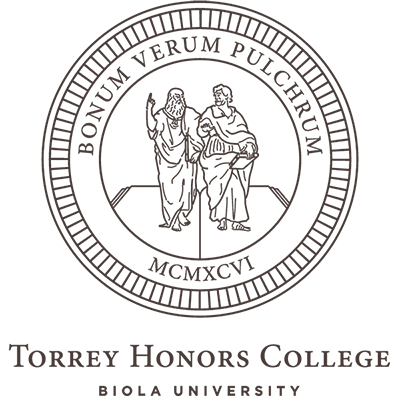A scene from The Canterbury Psalter (12th century)
Blog
Theodoret on the Trinity

Early in the spring term of 2025, I tried following a footnote in a 17th-century Protestant theologian (can’t remember who) that pointed to some wonderfully clear trinitarian theology supposedly by Justin Martyr. I could tell at a glance that it was not likely to be as early as Justin: too anachronistically Nicene. As I pulled on the thread, it turned out to be a work by Theodoret of Cyrus called the Expositio Recta Fidei. It’s got a complex history: it’s not exactly a lost work, since it exerted plenty of influence under the wrong name. It’s even cited sometimes as “Pseudo-Justin” by later writers who love its argument but recognize that certain dead giveaways (like explaining the meaning of “light from light”) mark it as by somebody else. It’s been identified as Theodoret’s since the 1940s, but it hasnt’ been available in English until 2022, when it appeared as Theodoret of Cyrrhus, Exposition of the Orthodox Faith, introduction and translation by Vasilije Vranic, Revised and Edited by Mark DeCogliano, in
The Cambridge Edition of Early Christian Writings, volume 3: Christ: Through the Nestorian Controversy (Cambridge University Press, 2022), 535-555.

The first half of Theodoret’s Expositio is on the Trinity, and I’ve been referring to it here and there in my work. At one point I decided I needed a clean version of it for quicker reference, so I put together a working document that includes (a) images of the columns of Migne’s Patrologia that I can footnote, (b) the clean text from Thesaurus Linguae Graecae that I can copy & paste, and (c) a translation. The translation’s the worst part (and it’s computer assisted), so I recommend using and footnoting the Cambridge edition. I actually did not know the the Expositio had been translated in 2022 when I put my version together. Very good news that this excellent text is in circulation in a standard reference work now. My handout (below) may still serve as a tool for having easy reference to the Greek text.
One of the most valuable things about Theodoret’s Expositio 1-9 is how well it teaches pro-Nicene theology, carefully building the case from scripture, then conspicuously using the key, traditional terms. That’s why having the Greek and English in parallel columns is especially valuable for learning how to speak pro-Nicene.
The second half of the Expositio (10-18) is about the incarnation. Without belaboring the point, we can say that Theodoret’s Christology temporarily came under suspicion of not being quite robustly anti-Nestorian enough to satisfy Team Cyril. This may be why the work sheltered under the name of pseudo-Justin for a while. At any rate, 10-18 is more detailed than 1-9, and more identifiable as one side of a disputed question. Where 1-9 looks back to Nicaea, 10-18 look forward to Chalcedon. For my purposes at present, I just need the Trinity section.
So here’s a pdf of my working document on this classic little exposition of patristic trinitarianism.
About This Blog

Fred Sanders is a theologian who tried to specialize in the doctrine of the Trinity, but found that everything in Christian life and thought is connected to the triune God.


